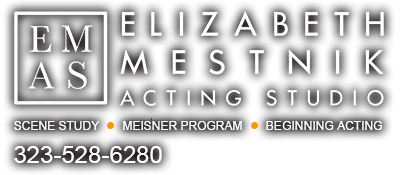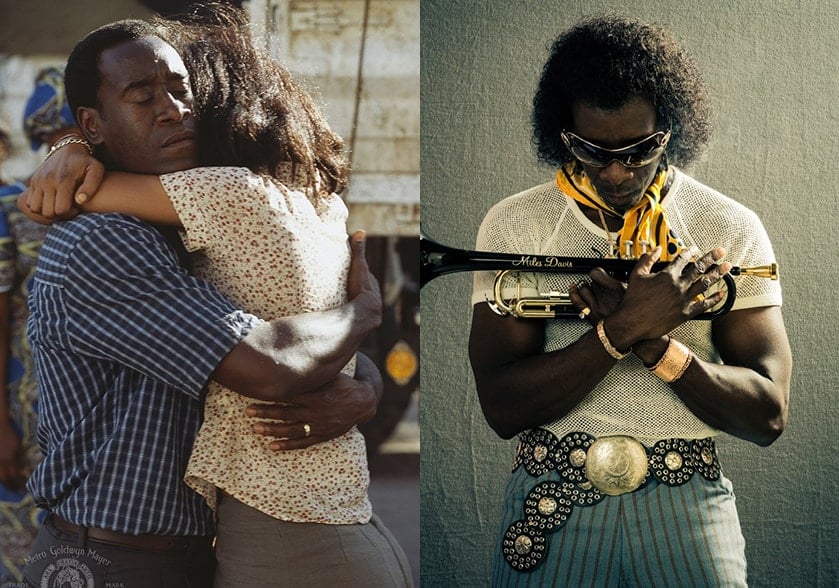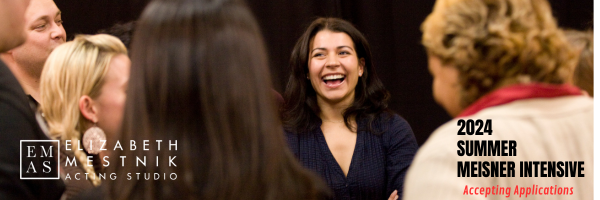My 2 cents to the Academy
Post By Elizabeth Mestnik

We are now in the middle of Awards season and it has me reflecting on my annual viewing of the Academy Awards broadcast. And I have one thing to say.
STOP MAKING IT A JOKE!
I mean that. Every year I watch, already inspired and awed by the creativity, imagination and craftsmanship involved in this year’s nominations. See, I am in the business, so I know just how much it takes to get a movie made, how many years of training…from the cinematographer to the actor in the smallest part, how many hours of toil at the computer by the writer and editors, how many hours of research and physical labor by the designers. I also know how, in many instances there are great financial risks for those who take a leap of faith to back a film that doesn’t scream “action packed block buster”. I know how artists live – scraping together a financial life to gift us with these incredible things called films. But we don’t hear about that.
We hear things like “Between all the nominees tonight you have made over 1400 films… and you’ve gone to a total of 6 years of college.” – Ellen Degeneres 2014. Because…well of course actors are uneducated idiots. Seth McFarlane had an entire song dedicated to actresses “boobs” in 2013, because well…that’s important. Jokes where actors are laughed at not with are the norm. And last year, as sympathetic as I am to the “Oscars so White” cause…Chris Rock spent a good portion of his opening monologue ridiculing Will Smith for boycotting the Award show, belittling Jada Pinkett Smith’s acting abilities and focusing on how much money Will Smith makes. Doing what everyone loves to do…reduce actors to a bunch of money hungry celebrity seekers. Maybe you could have really talked about why the racism within the industry is such an issue. Because what we do means something…filmmaking means something, about our culture and our society and when entire demographics are shut out of the story making – it is no longer our culture or our society being reflected. But you can’t have it both ways Chris and the Academy…it’s either a relevant problem – or it’s a joke. I just don’t believe it can be both. Hosts tend to always build up the meaning of the awards “Hollywood’s most prestigious honor” only to tear it down with the next joke. I LOVE Chris Rock – no one is smarter when it comes to placing issues of race in a humorous context…but you can’t just announce how racist Hollywood is and then minimize it by making it a joke in the next breath… It makes even the very real issue of diversity in film just another way to de-legitimize the entire system.
Almost every year I see the Oscars get detoured from honoring the artistry and craft to highlighting the worst issues about Hollywood, emphasizing every negative stereo type. We already have tabloids to do that for us day in and day out…lets have one night where this is seen as a noble endeavor, not just a bunch of dysfunctional narcissists throwing a party for themselves. How can you expect the audiences to respect us if we take a night meant for honoring our greatest and throw the focus onto all the hype we get fed daily.
There has been one exception I feel, and that was when Hugh Jackman hosted. He opened the awards show revealing to us how incredible and inspiring great performers can be, bringing other actors into the jokes, not making them the butt of them. I think that because he is such an artist and craftsman (a true triple threat)…his admiration for his fellow actors came through. Because he understands it from the inside out, his respect for filmmaking was most evident. He respects our business – and we did too.
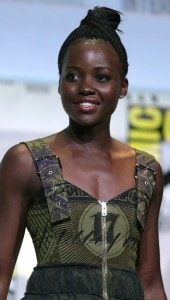
Unlike the Tony’s or the Grammy’s– where you see the performances live and can see the sweat and talent that goes into each show, the television audience needs to be shown and told how “the sausage is made” in film. I’d love for there to be more time investigating the training required for different categories. Show us a sample of Lupita Nyong’os training at Julliard. Interview filmmakers about the risks they had to take to start their careers. Show us the noble toil.
This is an award show that supposedly honors excellence in the cinematic arts…but it has become an award show that jokes at the artist’s expense. It reinforces negative stereotypes, undercuts the power of the medium and needs to change direction to stay relevant.
I work with aspiring actors and directors every day – and I remind them every day of the importance of our artistry – to hold a mirror up to the world, to inspire and tell the hard truths. The best of them work tirelessly for years, not for celebrity or big paychecks but to have a voice in this world. It pains me that what is considered the highest honor that can be achieved in acting spends most of it’s broadcast time belittling what they aspire to. Because what the best in this industry does is not easy…it is not superficial and it is not a joke.
 The founder of EMAS, Elizabeth Mestnik is an acclaimed actress, director, and acting coach . Having spent her formative years in New York City studying under William Esper, her commitment is to bringing the best of the Meisner technique and New York Acting to hollywood and the craft of acting more generally.
The founder of EMAS, Elizabeth Mestnik is an acclaimed actress, director, and acting coach . Having spent her formative years in New York City studying under William Esper, her commitment is to bringing the best of the Meisner technique and New York Acting to hollywood and the craft of acting more generally.
5 Great Contemporary Character Actors
A character actor is a versatile, flexible artist who provides support to the story and star of a film. These actors must have the ability to play any role, from villain to hero to passer-by. Some, like Gary Oldman or the late Philip Seymour Hoffman, are stars in their own right. Others are not as well known by name, but are industry favorites.
The following actors are some of the best, most gifted actors in Hollywood. Movie-goers are virtually guaranteed a standout performance by each one of these outstanding supporting actors.
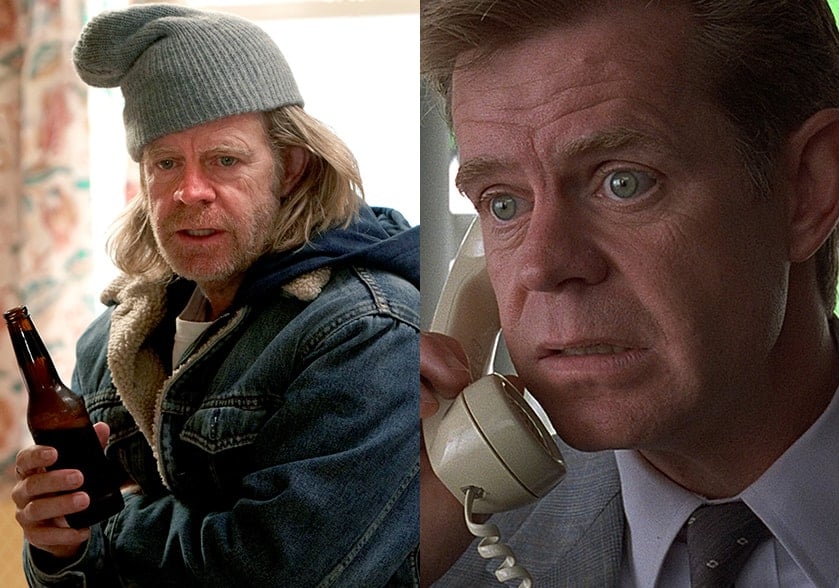
1. William H. Macy
Emmy Award-winning and Academy Award nominated William H. Macy does not have a face that is easily forgotten. Now the star of the Showtime series Shameless, the bulk of Macy’s work has come in the form of character actor in some of Hollywood’s most successful and critically acclaimed films.
Macy began working in the industry in the 1970s when he founded the St. Nicholas Theater Company along with his friend, the playwright David Mamet. Thanks to his versatility, Macy was able to succeed both on stage and in film. His credits include such notable films as Radio Days, Mr. Holland’s Opus, Air Force One, Boogie Nights and Room. He is arguable most known for his role as Jerry Lundegard in Fargo.
Macy earned a star on the Hollywood Walk of Fame in 2008.
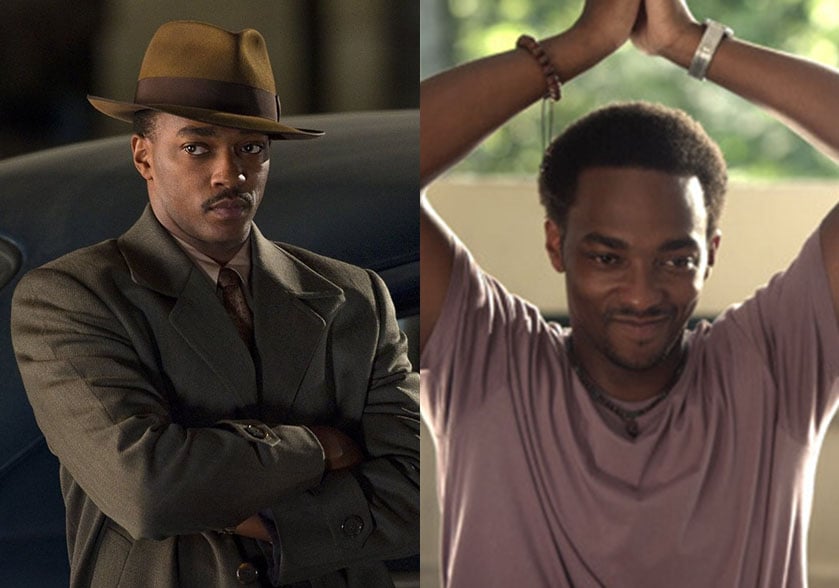
2. Anthony Mackie
Like many character actors, Anthony Mackie started his career on the stage. A graduate from the prestigious Juilliard school, Mackie earned an OBIE in 2002. The following year he began his film career and has been steadily working since then. Though Mackie has had a number of starring roles, his ability to transform himself into any part that comes his way has made him an invaluable character actor.
Mackie’s film credits include 8 Mile, which was his first feature film. He also appeared in Million Dollar Baby, She Hate Me, The Fifth Estate and The Hurt Locker, a role for which he was widely praised by audiences and critics alike. Actor found mainstream success when he joined the Avengers franchise as Falcon.
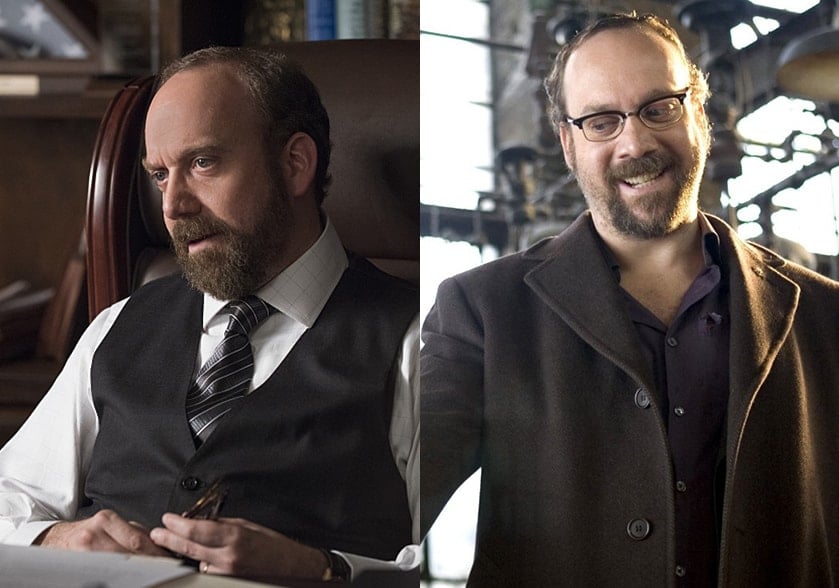
3. Paul Giamatti
Paul Giamatti’s long career as a character actor began in the late 1980’s when he performed on stage while completing a Master of Fine Arts at Yale. His first film roles were with some of the most high-profile directors in the business, including Cameron Crowe’s Singles, Woody Allen’s Mighty Aphrodite and Sydney Pollack’s remake of the classic Billy Wilder film Sabrina.
Giamatti has gone on to have one of the most prolific careers of character actors in the history of Hollywood cinema. He has shown himself able to portray comedic characters, like those in Big Momma’s House and The Hangover Part II. He is also powerful in dramatic roles, such as was evidenced by his SAG nominated Straight Outta Compton performance. Giamatti truly shines when he straddles the line between both, giving depth to each role he takes on.
Giamatti has also been a successful leading actor. His role as John Adams in the HBO miniseries of the same name earned him an Emmy, Golden Globe, and Screen Actors Guild award.

4. Michael Peña
Michael Peña has one of the most versatile careers of any character actor working in the business. Peña moved audiences to tears in his role as real-life hero Will Jimeno, a firefighter buried under rubble for 13 hours in World Trade Center. He also made movie-goers giggle every time he appeared onscreen as bumbling, yet lovable criminal Luis in Ant-Man.
An expert in onscreen elasticity, Peña arguably displayed his acting chops best in the underrated television series Gracepoint. In this role, Peña played Mark Solano, a father whose son was recently found murdered. At times audiences wept for the man’s loss, but also wondered if he was the real killer.
Peña’s skillful acting has led to nominations for an Independent Spirit Award, an Imagen Award, an MTV movie award and three ALMA Awards.
5. Don Cheadle
Movie-goers have long been delighted, intrigued and engrossed by Don Cheadle’s performances. Cheadle’s ability to play any role he reads puts him in a class with the best character actors of all time. This career began in the mid-1980s with small roles on film and television. Within a decade, he had proven his acting flexibility. With roles in Boogie Nights, Devil in a Blue Dress, Rosewood and The Rat Pack, he showed that he could play dramatic, neo-noir, historical fiction and biographies with ease.
Other outstanding films include Traffic, Hotel Rwanda and Crash. Cheadle has also taken on television where he played the starring role in Showtime’s House of Lies. He saw massive box office success by taking over the role of “War Machine” in Iron Man 2, a role that he has repeatedly reprised.
Have a different opinion? Let us know below.
APPROACHING THE CHARACTER – AN ACTORS PERSPECTIVE
Post by Michael Yurchak
Developing characters is a much-debated topic and something that comes up again and again with students, coaches, professionals and newbies. My own approach is one I have found useful, and I am happy to share with you all here! To be sure, there are many ways to skin a cat (sorry cat), so if there are any comments or suggestions, I am more than happy to hear them! For now, though, here’s the way I see it:
1. POV
Assuming you have already handled script analysis and know what kind of project you’re reading for, one of the first things I like to consider when working on a project (either for a gig or an audition) is the character’s point of view (POV). A character’s POV is the way they see the world they live in. It involves status, and shapes the way the character will interact with the other people he or she comes into contact with. It also forms an opinion about the way the character sees things (“Life’s a bowl of cherries!” or “Everything is so unfair!” etc.). This part matters a lot because it will affect the disposition (or mood) of the character. Moods can change, of course, but if the character is a known sour-puss, that may show through even when they’re happy (think Eeyore from Winnie the Pooh).
2. Size and Shape of Character
With POV and status in mind, I start to consider the size and shape of the character. There are different vocal placements one might choose for large characters with high status and a sunny disposition, for example, than one might for a small, high-status character with a chip on his shoulder. A great example of this is the difference between Sully and Randal in the Pixar classic “Monsters Inc.” Both characters are arguably high-status, but their POVs are so vastly different, that even without the superlative vocal stylings of John Goodman and Steve Buscemi, we would hear a clear vocal difference in our heads before giving it a shot ourselves.
Deciding where the voice comes from inside our own bodies and the placement of the voice inside the mouth to derive dialect and tone is sometimes known as “vocal posture” (this is an idea coined by Dudley Knight and Phil Thompson). Kermit the Frog has a guttural placement with a mid- to high-range pitch, for example.
3. Cadence or Rhythm of Speech
This is another important thing to consider. Just as the walk of a physical character will affect the way they are seen by the world, the cadence of a character voice makes a huge difference in how the world takes in the information shared by that character (see Christopher Walken as an example here).
4. Physicality
All of the above will have an impact on how the character moves through space. He or she will have developed a way of moving that works for them (just as we all have). The posture, gate, fluidity, speed, and purpose of motion will be affected by their status and POV. They may also bring a specific animal to mind (remember Jordana’s Rasa workshop?). Getting up and moving with the script, feeling the words come out and how they change with a new posture and movement pattern is an important part of finding the character and adds the last piece of bringing that character to life.
So, now we’re really starting to build something. We’ve considered the character’s POV (including status and disposition). We’ve taken size and shape into consideration, which will affect sound. We’ve played with vocal posture and cadence. Finally, we’ve explored physicality to really put the finishing touches on this guy! During all this pre-work, I always make adjustments to be sure the voice feels comfortable coming out and the body moves as I need it to. I need to be able to breathe, and I have to be able to enunciate clearly (even if the character has a speech impediment, the audience needs to understand the words, unless you are specifically told otherwise). Likewise, I need to be able to move and repeat the movement without causing stress or strain when the gig is finished—no good to twist your body up in a knot if you can’t untie it after the show! In other words, it doesn’t do me any good to create a voice I can only use for a sentence or two or a physical structure that is unsustainable. If I can’t recreate those elements, no matter how cool they look or sound for short bursts, they’re no good to me in the long run (or the folks that want to pay me)!
The Three Cs
The last piece of quality control I always run for myself in terms of delivery is what I call the three Cs: Clarity, Commitment, and Consistency.
Have I made CLEAR choices that are coming from an informed place as far as the character and script are concerned (the “givens” that are learned by reading the script or audition sides carefully)? Am I jumping in with both feet and really COMMITTING to those choices (a sheepish read is not gonna get the job–even if you’re reading for a sheep!)? And, is the character CONSISTENT from beginning to end of the piece, and can I maintain that consistency for the duration of the gig when I get it?
If I can honestly answer yes to these questions, and I like what I hear and see… I go for it and hope for the best, letting it all go as I do and trusting that the work I did in the rehearsal room will be enough to allow me to be present on the actual day without having to effort my vocal and physical moves. Do your best, be proud of the work you create–care about it. If you like what you’re doing, keep working at it. This is an art form. There is no mathematical equation or specific blueprint to solve the question of what a character sounds and looks like. In the end, tell the truth and lead with your heart. Who could ask for anything more?
Thoughts? Comments? Let me hear ’em!
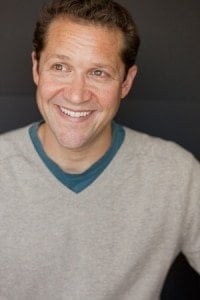 Michael Yurchak is an award winning actor, voice over artist and educator. In addition to his work with EMAS, Michael works as a Lead Teaching Artist in many theaters throughout the country. Teaching students–of any level–is his genuine passion. To read more about Michael click here, or check out his IMDB page.
Michael Yurchak is an award winning actor, voice over artist and educator. In addition to his work with EMAS, Michael works as a Lead Teaching Artist in many theaters throughout the country. Teaching students–of any level–is his genuine passion. To read more about Michael click here, or check out his IMDB page.
EMAS Wishes You the Happiest of Holidays!
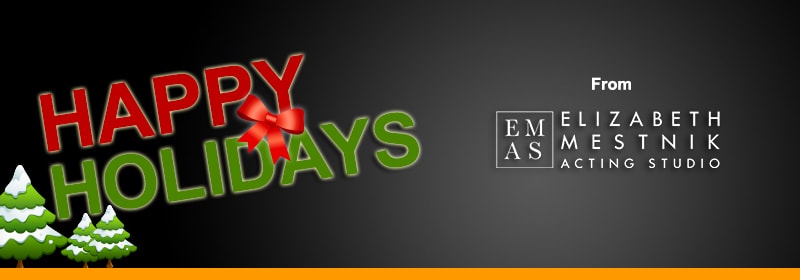
All of Elizabeth Mesnik’s Acting Studio staff would like to wish you Merry Christmas and Happy Holidays! We hope for warm and joyful time for You and Your Closest Ones!
Don’t forget to check out our Schedule for January 2017. You could still catch up with On Camera Technique Class that starts January 19th, click here to know more.
On Camera Technique Workshop: Enrolling; Limited Class Size
 Pilot season is coming up quickly! It’s starting January 19th 2017…
Pilot season is coming up quickly! It’s starting January 19th 2017…
Whether this is your first or fifteenth season, it is important that you be at your best, ready when your opportunity arises!
With the majority of all auditions for television and film requiring that the actor be put on camera for the casting director, director or producers to review, today’s working actor must have a solid understanding of on-camera technique that is specific to the audition format.
In this course strong cold-read and on-camera skills are developed as well as an empowered perspective of the casting process and a clear understanding of what it truly means to “own” the room.
- How to break down a script so you can make choices that are specific, strong and actable.
- Understand what the camera “sees” so that you work has the most impact:
- How to use your eyes
- How to use stillness
- How to use the “frame” of the camera
- The tools to work within the audition “close-up” so that all your skills as an actor are revealed.
Whether you have just completed your professional training, or have been a working professional, this class is meant to sharp and ready to give your very best on camera auditions. Only serious actors with prior training or experience and a true desire to improve their craft need apply. Class size is limited to 10. Each actor works every class, individually, on-camera.
The class will be taught by Thom Rivera, who is a television, film, stage and voice actor. As an actor, he has worked at most of the top theatre companies in the country.
Want to know more? For more details of the class, click here. Registration is already open!
On Camera Acting Class:
When: Thursdays at 7pm – January 19th – March 23rd
Instructor: Thom Rivera
Where: 11423 Moorpark Street, North Hollywood, Los Angeles
Tuition: $520 for 10 weeks
Now Enrolling for Winter Shakespeare Classes
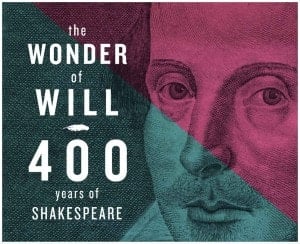 The Elizabeth Mestnik Acting Studio (EMAS) is proud to announce registration for our Winter 2017 Playing Shakespeare Class. Playing Shakespeare can be one of the most challenging yet rewarding endeavors for an actor. Whether acting on stage or on screen, the ability to bring a full, living character to life using Shakespeare’s words is an invaluable skill; one that is evident when watching the many greats of screen and stage who have their roots in Shakespearean drama.
The Elizabeth Mestnik Acting Studio (EMAS) is proud to announce registration for our Winter 2017 Playing Shakespeare Class. Playing Shakespeare can be one of the most challenging yet rewarding endeavors for an actor. Whether acting on stage or on screen, the ability to bring a full, living character to life using Shakespeare’s words is an invaluable skill; one that is evident when watching the many greats of screen and stage who have their roots in Shakespearean drama.
Held on Mondays from February 27th through May 1st, the class will consist of both monologue work and group exercises to use voice, physicality, and authenticity in connection with playing their character.
The class will be taught by Diana Jellinek, who has deep roots in Shakespeare in addition to her other work in Los Angeles.
To learn more about the details of the class, click here. Registration is now open!
Playing Shakespeare:
Cost: $380
What is… EMASLA in a Jeopardy Question!
Well, you’ve got to take pleasure in life’s little surprises and, last night, we had an excellent little surprise: Seeing the Elizabeth Mestnik Acting Studio pop up in the answer to a Jeopardy question!
A list of all of last night’s Jeopardy Questions: (hint) “Take the ‘A’ Training” for $600, Alex”
Here’s the clip in all of it’s glory:
If YOU’d like to “Take the ‘A’ Training” at the Elizabeth Mestnik Acting Studio, view more here.
Now Enrolling: The Character; a beginning Technique Class

This New Year get into another person’s shoes, try out their voice, feel their pain and their joy by developing THE CHARACTER. Learn to quickly bring life to a script through a set of tools that help you to grow into and fill out your character.
This 11 week course is not only about books and text, it’s about developing a personality. THE CHARACTER class at The Elizabeth Mestnik Acting Studio in Los Angeles (EMASLA) will provide you with a foundation in creating truthful, dynamic characters and expressing the way that you will be heard. Doesn’t matter if it’s a movie, television or audition, beginner class will help you find a technique to develop character’s psychology including voice and body language. Through exercises, improvisations, monologue and scene work, students acquire a comprehensive set of “acting tools” to draw upon when approaching a role. At the end of the course you will know how to bring a character to life and apply their techniques in scene work.
Up for the adventure? Then register and start your New Year with THE CHARACTER!
Find more information about our philosophy and the beginning technique class here.
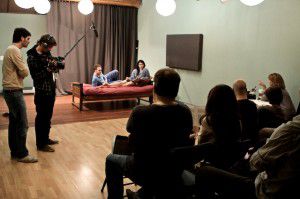
Time: Wednesdays at 1:30pm or Thursdays at 7pm
Date: January 11 – March 23 2017
Place: 11423 Moorpark Street, North Hollywood
Price: $510 for 11 weeks – 50% due at registration
Upcoming: SPIKE HEELS Staged Reading
The second in our four-part play play reading series at the Elizabeth Mestnik Acting Studio (EMAS), a cast of EMAS students will stage a reading of Spike Heels, by Theresa Rebeck.
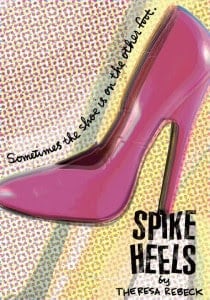 Pygmalion goes awry in this contemporary comedy of manners which explores sexual harassment, misplaced amour, and the possibility of a four sided love triangle. The combatants are a sexy, volatile young woman and three Back Bay types a writer, a lawyer and a fiancee in sensible shoes.
Pygmalion goes awry in this contemporary comedy of manners which explores sexual harassment, misplaced amour, and the possibility of a four sided love triangle. The combatants are a sexy, volatile young woman and three Back Bay types a writer, a lawyer and a fiancee in sensible shoes.
Featuring EMAS students:
Jeremiah Hahn
Jessica Nielson
Cassidy Schiltz
Steve Suh
Directed by Andrew Rodgers
The Acting Studio stages these events for our acting students, our faculty, and the larger artistic community. Admission is open to the public but any donations are appreciated and help us to continue staging these and other events that benefit the community.
If you would like to attend, Reservations are required due to limited space. Please RSVP to [email protected]
When: Sunday December 4th, 2016
Time: doors open at 6:30 for wine and cheese mixer and reading begins at 7:15
Where: EMAS 11423 Moorpark St. Los Angeles Map and Contact
To read a detailed account of our last play reading and what this particular form has to offer, please click here.
We hope to see you there!
About the Elizabeth Mestnik Acting Studio: Located in Studio City, Los Angles,The Elizabeth Mestnik Acting Studio (EMAS), our mission is to empower actors and acting students with a strong foundation in acting technique and a discipline that will last a lifetime. From our core Meisner classes, to acting workshops and seminars, each class aims to help students gain the “acting tools” that support successful acting careers.
Play Reading Series at The Elizabeth Mestnik Acting Studio
4 Actors, 4 Music Stands, 4 Chairs and an audience. No props, no costumes, no lights.
Just the actors with their scripts – and the audience.

On October 29th EMAS presented the first play of the 2016-2017 Play Reading Series with Dinner with Friends by Donald Margulies. EMAS took this opportunity to allow the acting studio’s faculty members Diana Jelinek, Jordana Oberman, Ken Weiler and Michael Yurchak to star in this Pulitzer Prize winning drama – a rare opportunity for our students to see their teachers practicing the craft. “It was wonderful to see our instructors in action! Seeing them putting on such a great performance without any props, blocking, or anything that can help create a “scene” made me appreciate their skills even more (and really solidified my trust in them as instructors) because they were only able to use their instrument and the power of relationship to tell the story.” said EMAS alum Tessa Brennan. She added, “I love that I can continue to stay connected to the community through events like these staged readings. I’m always so grateful that I found the EMAS Meisner program when I did, not only for the foundation it has laid in terms of my craft as an actor, but for the support and connections I have garnered through the studio.”
So what exactly is a Play Reading? It almost sounds academic…but trust me it’s not! A good play reading can be full of magic. Like a great radio play or audio book, it takes you on the journey – unencumbered by complicated production values. It’s the story, the actors and the audience. That is it. With minimal rehearsals the actors work with script in hand and can really commit to their craft as storytellers and revealers of the human experience. . Believe it or not, when actors do their job well…the audience actually stops seeing the actors flip pages, they stop see the bare set, and become transported to the world of the play. As EMAS student Stephanie Hoston shared “This reading taught me just what a good actor can add to a script. The script is nothing but words on paper until the actors make choices to bring it to life. If I had simply read this play, I may have dismissed some of the more controversial characters, however because of the actors I was able to see the human sides of each character. I left the reading feeling enlightened about circumstances in my own life as a child of divorce, and inspired as an actor. As an audience member, this is all I can ask for.”
I decided to develop this program because being exposed to great writers, having knowledge of genres and styles is an important part of being a fully trained actor. It’s inspiring to see the great breadth of material that has been produced by our master playwrights. If an actor is not familiar with the work of our great playwrights, they are taking advantage of the creative inspiration they offer; the juicy roles, the imaginative circumstances. They won’t know entirely what is demanded of the actor. Remember – plays are the actors medium, movies the director’s. Many of the today’s directors ground their vision in their knowledge of theatre, Kenneth Lonergan and David Hare to name a few. Actors might mmiss important references by directors (like the idea of a scene being “Pinter-esque” or a reference to Mamet’s rhythm) and they certainly are not grounding themselves in the rich history of acting that allows them to understand the roots of the craft itself.
So we decided to offer monthly play readings to whet the appetite and help our students develop a deeper understanding and love for the best plays our western cannon offers.
We will be focusing on reading plays of the 20th and 21st centuries, giving our students an opportunity to use the training they are receiving here to approach some of the most coveted acting roles of our times. It’s a great work out for the students who are cast in these readings, as there is really minimal rehearsal. They have to do the work themselves and call upon everything they have learned here. But it is also an amazing time for the entire studio to come together as an artistic community and hear some of the greatest plays of our times.
Upcoming Plays in our Play Reading Series are:
December 4th, 2016 – Spike Heels by Theresa Rebeck
January 29th 2017 – All My Son’s by Arthur Miller
March 26th 2017 – Topdog/Underdog by Suzan-Lori Parks
Admission is free – but requires an RSVP, and donations are gratefully appreciated to help us continue this program. All readings end with a post-performance discussion that always inspires and leaves us wanting more!
Hope you come and join us for one of these events in the next few months.
~Elizabeth
 The founder of EMAS, Elizabeth Mestnik is an acclaimed actress, director, and acting coach . Having spent her formative years in New York City studying under William Esper, her commitment is to bringing the best of the Meisner technique and New York Acting to hollywood and the craft of acting more generally.
The founder of EMAS, Elizabeth Mestnik is an acclaimed actress, director, and acting coach . Having spent her formative years in New York City studying under William Esper, her commitment is to bringing the best of the Meisner technique and New York Acting to hollywood and the craft of acting more generally.

